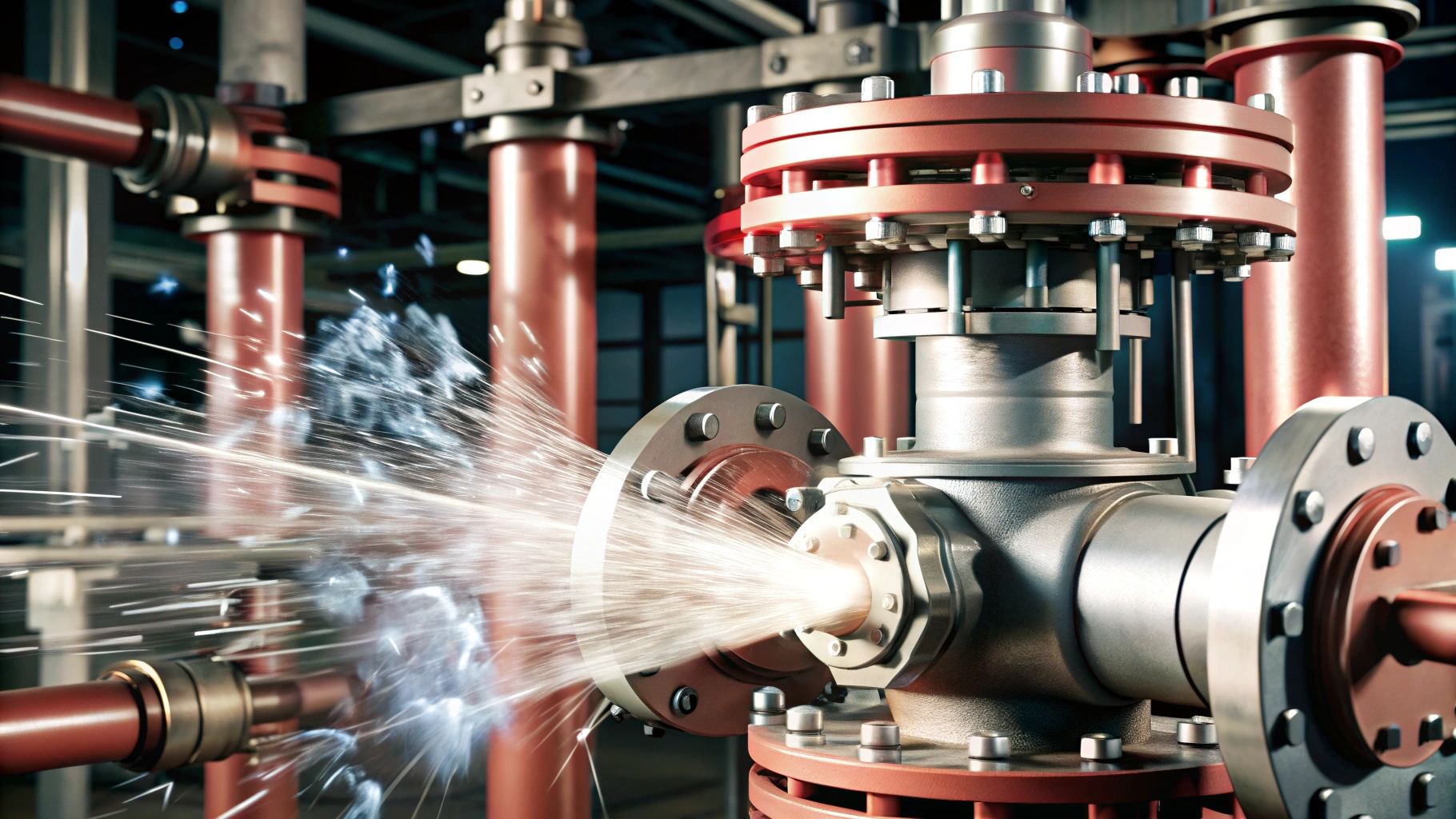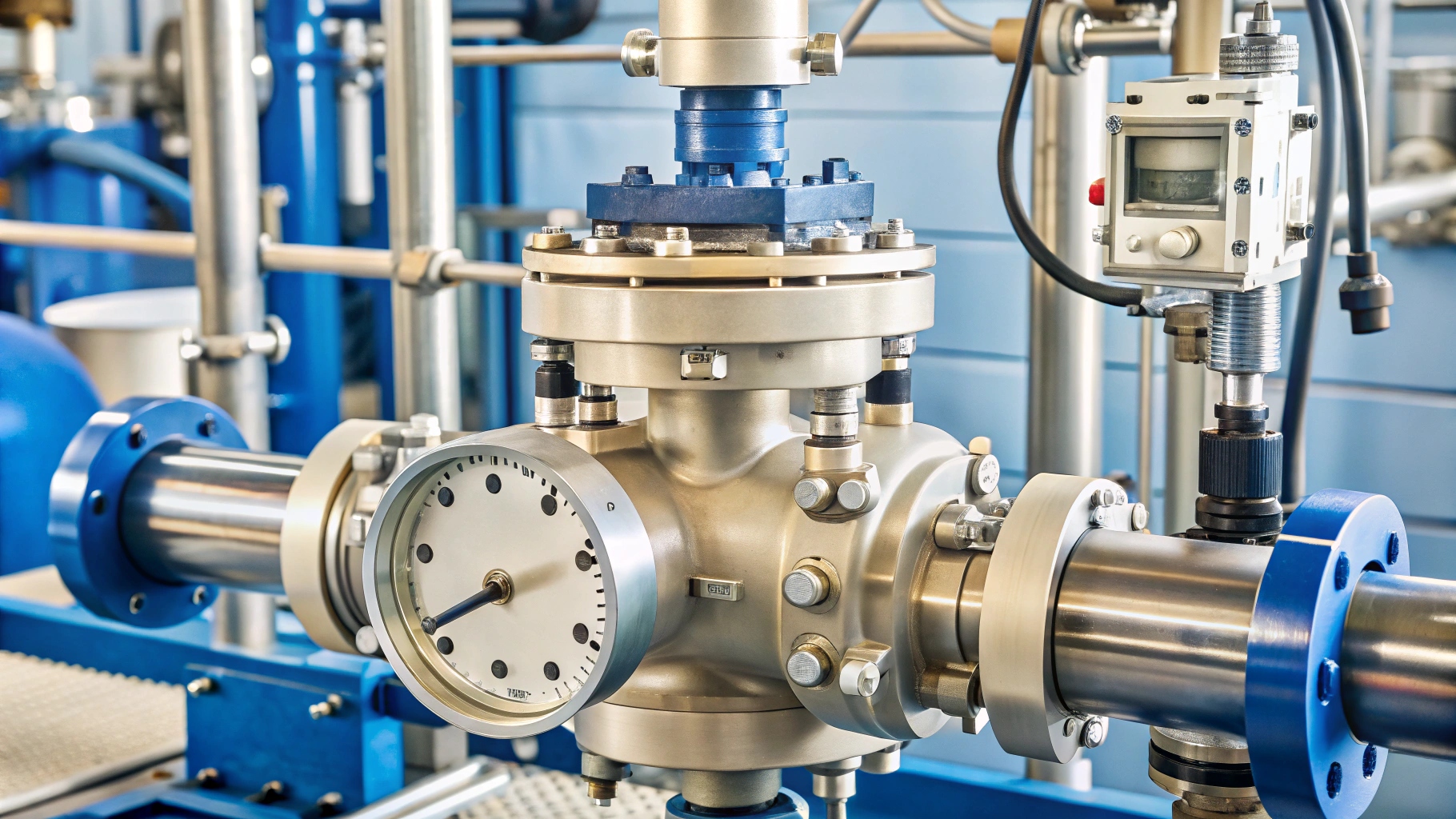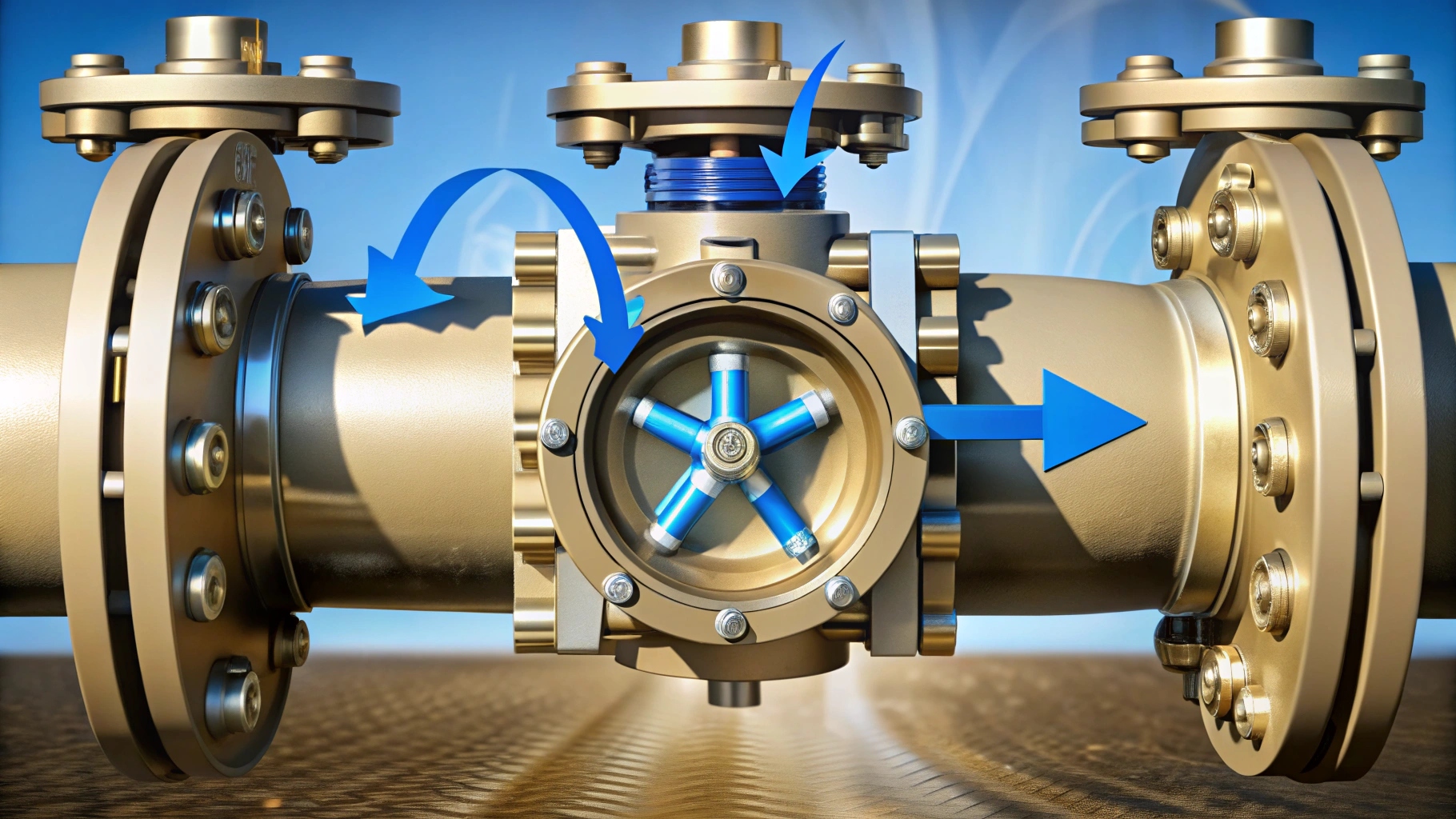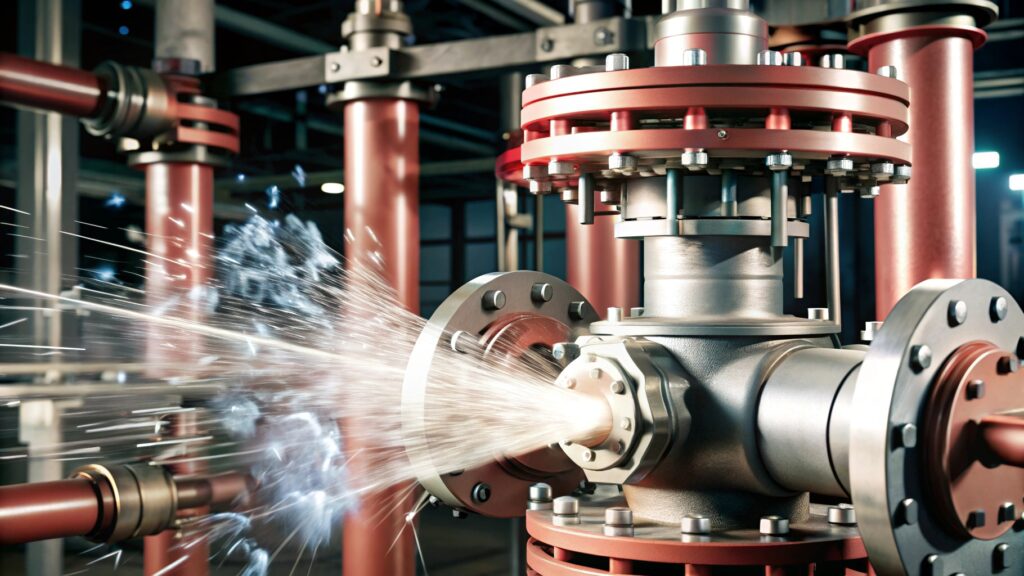
Pilot-operated pulse valves are crucial in various industrial systems, regulating the flow of air or gas. But what exactly makes these valves so effective?
Pilot-operated pulse valves control fluid flow with precision, using a pilot signal to operate a larger valve. They are especially useful in systems requiring controlled bursts of air or gas.
To understand the importance of pilot-operated pulse valves, it’s essential to first know how they function and what makes them distinct from other valve types.
What is a Pilot Operated Valve?
Pilot-operated valves are used in many industries to control fluid flow1. They’re different from manual valves, as they require a pilot signal2 to activate them.
A pilot-operated valve uses a smaller pilot valve3 to control the operation of a larger valve, offering precise control over fluid flow in complex systems.

Pilot-operated valves are designed to handle higher pressures4 and complex systems that manual valves can't manage efficiently. These valves have two stages: a pilot valve and a main valve. The pilot valve controls the operation of the main valve by applying a small signal or pressure. When the pilot valve is activated, it sends a signal to the main valve, which then responds by opening or closing.
For example, in hydraulic systems5, a small pilot valve could regulate the operation of a large valve that controls the flow of fluid. The pilot valve only requires a small input of pressure or force to operate the larger valve. This design ensures energy efficiency, as the pilot valve consumes very little power compared to manually operated systems.
A significant advantage of pilot-operated valves is their ability to be used in high-pressure environments. Since the pilot signal controls the operation of the main valve, the valve can handle much higher pressures without direct mechanical effort, making it ideal for industrial and heavy-duty applications. Additionally, these valves are often more durable and have longer service lives, which makes them suitable for systems that require long-term performance.
Pilot-operated valves are used in a variety of systems, including fluid control in hydraulic machinery, pneumatic systems, and even in the automotive industry6 for transmission control. However, their complexity can also mean they require more maintenance and technical understanding to operate effectively.
What Does a Pulse Air Valve Do?
Pulse air valves are essential in systems that require bursts of air, especially for cleaning or purging purposes. How do these valves work to control the air flow7?
A pulse air valve controls the release of air in short bursts, making it ideal for applications like cleaning filters or purging systems.

Pulse air valves are commonly used in systems that require periodic bursts of compressed air to perform specific tasks, such as cleaning filters, purging systems, or creating pressure to activate other equipment. These valves can be activated in response to various triggers, such as a timer8, sensor9, or manual input10.
The operation of pulse air valves typically involves a rapid, high-pressure burst of air that is released for a short duration. This action helps to remove debris or dust from filters and maintain the efficiency of air filtration systems11. In industrial settings, pulse valves are essential in keeping machinery clean and operational.
One of the key features of pulse air valves is their ability to respond quickly and accurately to signals. When triggered by a control system, the valve opens momentarily, releasing the compressed air at a specific pressure and volume. This ensures that the pulse of air is consistent and effective in achieving its purpose, whether it’s cleaning, purging, or pressurizing a system.
These valves are also used in dust control systems, such as those found in grain mills12 or cement plants13. The pulses of air help keep the system clear of dust, preventing clogs and improving the efficiency of the operation. Overall, pulse air valves are an essential component of any system that needs controlled bursts of air.
What Does a Pilot-Operated Check Valve Do?
Pilot-operated check valves play a critical role in controlling fluid flow and preventing backflow14. But how do they ensure that fluid only flows in one direction?
A pilot-operated check valve allows fluid flow in one direction while preventing backflow by using a pilot signal to control the valve.

Pilot-operated check valves are used to ensure that fluid flows in one direction only, preventing backflow and maintaining system integrity. These valves are commonly found in hydraulic15 and pneumatic systems16, where fluid needs to be controlled precisely. A pilot-operated check valve functions by using a pilot signal to hold the valve closed against any potential backflow.
When the system operates in the intended direction, the pressure from the flow of fluid overrides the check valve, allowing it to open and let the fluid pass through. However, if the flow reverses or if there’s a risk of backflow, the valve automatically closes to block the reverse flow. This is especially critical in systems where backflow could damage equipment or compromise the safety of the operation.
The pilot function17 in this valve helps to overcome the pressure differential and control the opening and closing of the valve. For instance, in a hydraulic system, the pilot-operated check valve will stay closed until a pressure signal is sent to open it. Once the pressure changes direction or drops, the valve closes to prevent fluid from flowing backward.
Pilot-operated check valves are used in systems where backflow could be hazardous or cause operational failures, such as in automotive brakes18, construction machinery19, and process control systems20. The key benefit of this valve is that it offers both safety and efficiency, as it prevents damage while allowing fluid flow in the desired direction without manual intervention.
What is the Difference Between Direct and Pilot Operated Valves?
Understanding the difference between direct-operated valves21 and pilot-operated valves22 is essential when selecting the right valve for an industrial system. What sets them apart?
Direct-operated valves control flow directly, while pilot-operated valves use a smaller pilot signal to control a larger valve, offering greater efficiency in complex systems.
Direct and pilot-operated valves differ primarily in how they control fluid flow. Direct-operated valves use a mechanical mechanism to control the flow of fluid directly, such as a spring-loaded valve23 or solenoid-operated valve24. In this type of valve, the force applied to the valve directly opens or closes it. The main advantage of direct-operated valves is their simplicity, as they do not require additional components like pilot valves. They are typically used in low-pressure or smaller systems where precise control is less critical.
On the other hand, pilot-operated valves rely on a small pilot signal to control the operation of a larger valve. This makes them more suitable for high-pressure systems or applications that require more precise flow control. The pilot valve sends a small signal to the larger valve, which then opens or closes based on the pilot input. This type of valve allows for more efficient control, as the smaller pilot valve requires much less energy to operate than directly controlling the larger valve.
Pilot-operated valves offer more versatility and are often found in larger industrial systems, such as hydraulic machinery25, pneumatic systems26, and large-scale manufacturing operations27. They are more complex and require more maintenance but provide better control and higher capacity for handling pressure.
Overall, the choice between a direct-operated valve and a pilot-operated valve depends on the specific requirements of the system, such as pressure levels, flow control precision, and efficiency needs. Direct-operated valves are more straightforward but may not be suitable for high-pressure or complex systems, while pilot-operated valves offer better control and are more efficient for demanding applications.
Comparison Table: Direct vs. Pilot Operated Valves
| Feature | Direct-Operated Valve | Pilot-Operated Valve |
|---|---|---|
| Control Mechanism | Direct mechanical action (e.g., solenoid) | Uses a smaller pilot valve to control a larger valve |
| Suitability for Pressure | Low to medium pressure | High-pressure applications |
| Complexity | Simple, fewer components | More complex, requires pilot signal |
| Energy Consumption | Higher (direct actuation) | Lower (pilot valve controls larger valve) |
| Maintenance | Lower (simpler design) | Higher (more components to maintain) |
| Common Use Cases | Low-pressure systems, small machinery | High-pressure systems, industrial applications |
| Control Precision | Less precise | Highly precise, suitable for complex systems |
Conclusion
Pilot-operated pulse valves are essential for precision control in complex fluid systems. Understanding the different valve types helps ensure optimal performance in industrial applications.
-
Learn the fundamentals of fluid flow management across different systems and industries. ↩
-
What is a pilot signal and how does it activate pilot-operated valves?
reason for clicking: Discover the role of pilot signals in controlling pilot-operated valves. ↩ -
Explore how small pilot valves are used to control larger valves in complex fluid systems. ↩
-
Understand how pilot-operated valves manage high-pressure systems efficiently. ↩
-
Learn how pilot-operated valves are applied in hydraulic systems for optimal fluid control. ↩
-
Find out how pilot-operated valves assist in the control of automotive transmission systems. ↩
-
Learn how pulse air valves control air flow to perform critical tasks in industrial systems. ↩
-
Understand how timers are used to trigger pulse air valves for precise air release. ↩
-
Explore the use of sensors in controlling pulse air valves for efficient operation. ↩
-
Find out how manual inputs can be used to control pulse air valves in specific applications. ↩
-
Learn how pulse air valves maintain efficiency in air filtration systems by removing dust and debris. ↩
-
Discover how pulse air valves contribute to dust control and system efficiency in grain mills. ↩
-
Understand the role of pulse air valves in maintaining clean and efficient operations in cement plants. ↩
-
Learn how pilot-operated check valves prevent backflow and protect system integrity. ↩
-
Discover the role of pilot-operated check valves in hydraulic systems for precise fluid control. ↩
-
Understand how pilot-operated check valves ensure controlled fluid flow in pneumatic systems. ↩
-
Find out how the pilot function controls the opening and closing of check valves in fluid systems. ↩
-
Learn how pilot-operated check valves enhance safety in automotive braking systems by preventing backflow. ↩
-
Explore the importance of pilot-operated check valves in maintaining efficiency in construction machinery systems. ↩
-
Understand how pilot-operated check valves improve safety and efficiency in industrial process control systems. ↩
-
Learn how direct-operated valves control fluid flow directly and their application in simpler systems. ↩
-
Understand how pilot-operated valves provide greater control and efficiency in complex systems. ↩
-
Explore the role of spring-loaded valves in direct-operated systems for controlling fluid flow. ↩
-
Discover the function and benefits of solenoid-operated valves in controlling fluid flow. ↩
-
Learn how pilot-operated valves enhance efficiency and performance in hydraulic systems. ↩
-
Understand the role of pilot-operated valves in maintaining control within pneumatic systems. ↩
-
Find out how pilot-operated valves provide greater efficiency in large-scale industrial operations. ↩



